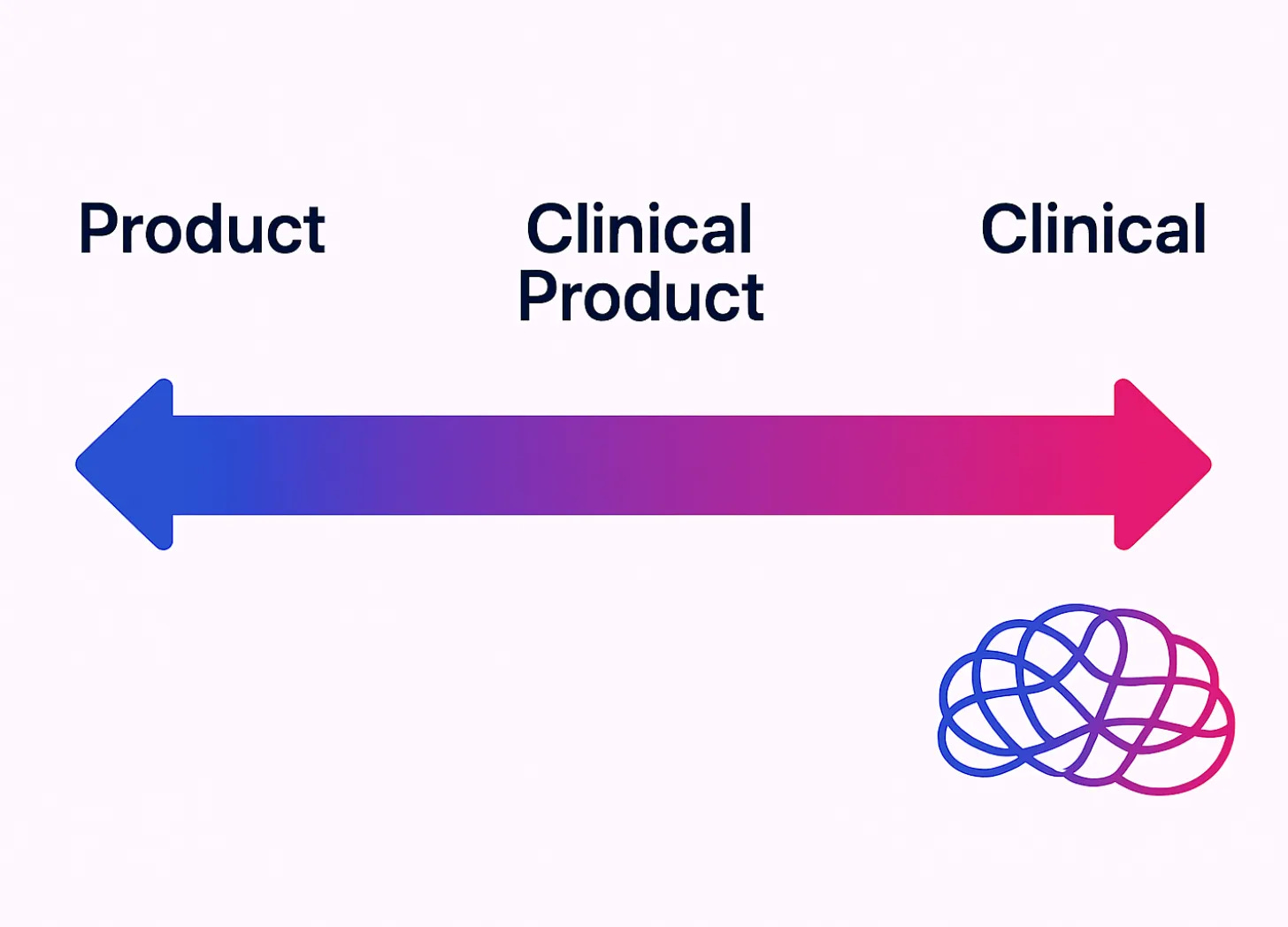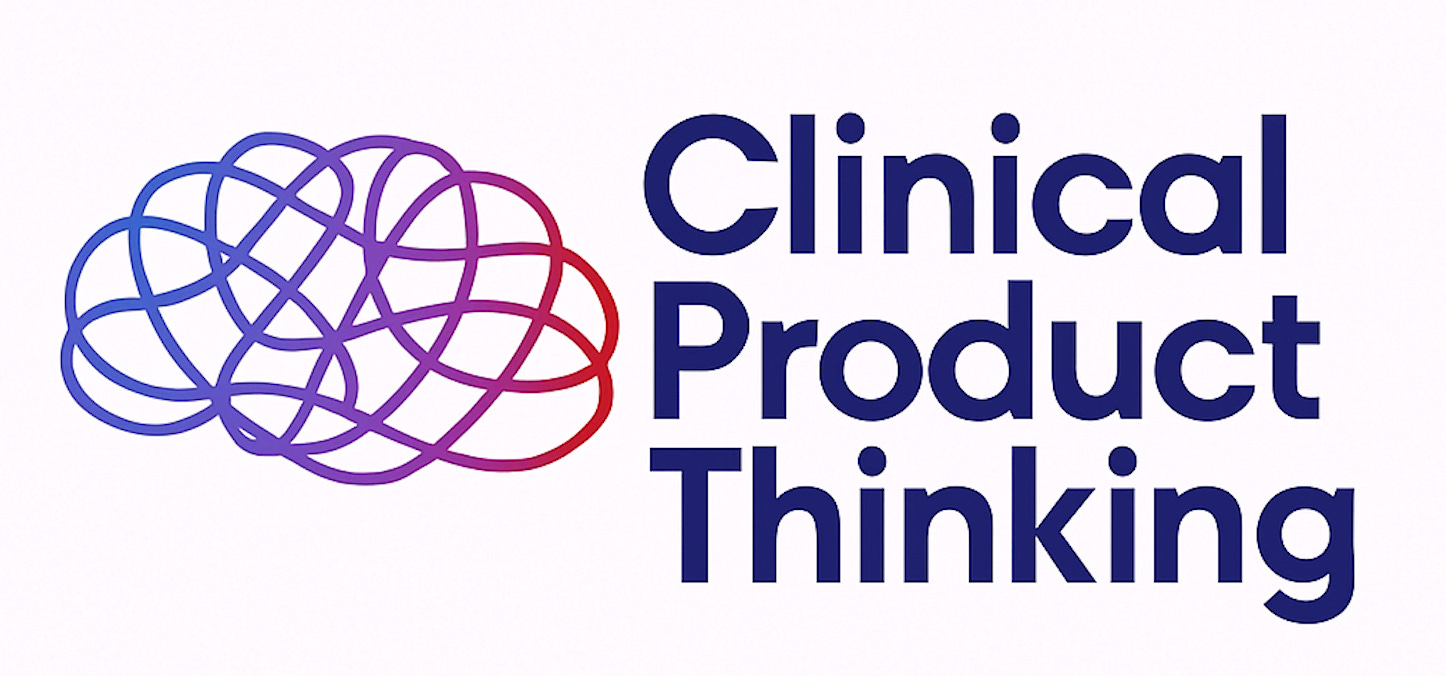The Hidden Danger in Product–Clinical Misalignment ⚠️
Why HealthTech products stall when product and clinical pull in different directions.
When product and clinical teams work together, their differences in language, priorities, processes and mindset often mean they’re pulling in different directions.
As one Head of Clinical Product at a VC-backed startup put it:
“There's an empty chasm between product and clinicians, with both shouting at each other and no link between them. CPMs fill that gap.”
Product and Clinical aren’t just distinct disciplines; they think and work in fundamentally different ways. The result? Miscommunication, delays or compromises that lead to watered-down solutions, diluting both safety and usability.
Here’s how they miss each other:
Different languages.
Product teams express ideas in metrics and growth: features, velocity, DAU, LTV. Clinical teams express ideas in evidence and guidelines: risk, safety standards, outcomes.
Both can be describing the same issue, but because they use different words and reference points, they can talk past each other without realising it.
Different priorities.
For product, speed and user experience are king. The goal is to launch something people love using, maximise lifetime value and scale rapidly. For clinical, the north star is risk reduction and patient safety. The goal is to reduce harm, follow best practices and prove effectiveness.
Neither is wrong, but without alignment, you get tension: the desire to ship fast versus the need to move carefully.
Different processes.
Product lives in agile sprints, roadmaps and iterative design.
Clinical lives in governance cycles, risk reviews and compliance processes.
The two rhythms are fundamentally out of sync, which means the clinical voice often arrives “too late”, i.e. at the end, when the product is already baked.
Different mindsets
Product embraces “move fast and break things.” Failure is feedback. Clinical embraces “first, do no harm.” Failure is harm.
These opposing logics make collaboration fragile unless someone can translate between them.
This is where Clinical Product comes in.
How Clinical Product Creates Alignment
Clinical Product isn't about picking sides or mediating disputes. It's about building the infrastructure that makes collaboration not just possible, but powerful.
Clinical Product Managers (CPMs) help by:
Translating languages. CPMs turn “clinical speak” into product requirements and “product speak” into clinical rationale. They make sure everyone in the room is talking about the same thing.
Balancing priorities. CPMs help connect what’s good for patients with what’s viable for the business, so teams aren’t forced to choose one over the other.
Synchronising processes. CPMs bring governance into agile, risk assessments at kickoff, clinical checkpoints during sprints and safety cases documented alongside code. They stop safety from being a last-minute blocker.
Aligning mindsets. CPMs help teams move fast and safely by creating alignment on which risks are acceptable, which outcomes matter most and what trade-offs can be made.
The key is that CPMs have credibility in both worlds. A non-clinical PM will often defer to a clinician’s caution, while a clinician may default to safety even if it kills usability. A CPM can hold both perspectives and guide the team towards a pragmatic middle ground, safe enough and usable enough to move forward.
💊 Case Study: The Digital Pharmacy Dilemma
Here’s a real-world example of a tension that killed a digital pharmacy’s UK business.
The clinical view: Prescriptions should be reissued every month. This ensured regular check-ins so clinicians could catch side effects, misuse, or health changes early. Safer for patients, lower risk for the business, but costly, and frustrating for patients who faced monthly forms or calls.
The product view: Prescriptions should last a full year. One clinical review, then uninterrupted home delivery. Cheaper to run, easier to scale and smoother for patients, but riskier, with less clinical oversight.
Both sides were trying to do what was best for patients and the business. Clinical prioritised safety and oversight; product prioritised experience and growth. Both perspectives were valuable. But without a bridging function, the clinical view prevailed, costs spiralled, margins collapsed, and the company eventually withdrew from the UK market.
⚠️ Founders, take note: this is where Clinical Product becomes mission-critical.
Here’s how a UK company with a strong clinical product function tackled the same dilemma differently:
Baseline safety: Every prescription gets an annual clinician review.
Risk stratification: Higher-risk patients (new medications, complex conditions, flagged side effects) are automatically prompted for monthly or quarterly check-ins.
Tech-enabled monitoring: Lightweight questionnaires and automated alerts catch early warning signs without forcing every patient into monthly reviews.
The result:
Patients enjoy seamless delivery with minimal admin.
Clinicians maintain oversight where it’s needed most.
The business balances safety, scalability and profitability.
This is the role of Clinical Product: not to side with “product” or “clinical,” but to bridge priorities, design pragmatic processes and create solutions that scale safely.
The Bottom Line
The digital pharmacy dilemma is just one example. Sometimes it’s about prescription renewals, sometimes triage algorithms, sometimes mental health engagement metrics. The specifics vary, but the pattern is the same: product and clinical side by side, but pulling in different directions.
The result is growth gets held back not by lack of ideas or technology, but by the lack of alignment between disciplines.
Clinical Product is the bridge. By translating across functions, CPMs help companies build products that are both usable and safe, scalable and trusted.
👉 So if you’re building in HealthTech, ask yourself: Who’s the bridge in your company?
🤝 Work with me | 📅 Attend an event | | ✍️ Send a message
Made with ❤️ for better, safer HealthTech.





